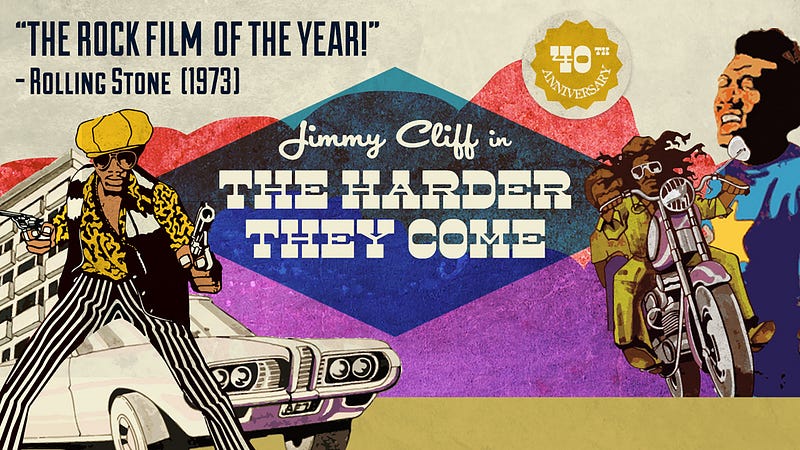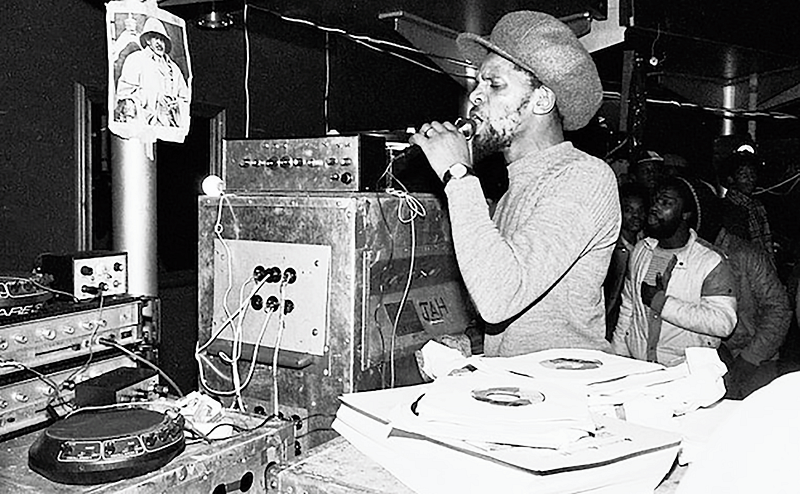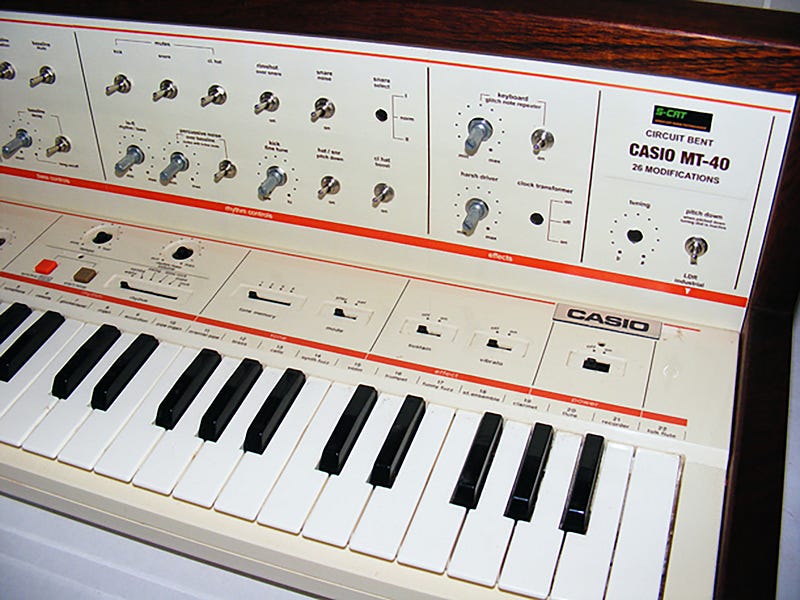
Bob Marley
Reggae is Dead, Who Killed Jah Music?
Technology and materialism have replaced musicianship and human rights—what’s left is lifeless and soulless
By Steve J.
» BREAKING NEWS, GUEST RUNDOWNS » IS REGGAE DEAD? HAVE TECHNOLOGY AND MATERIALISM REPLACED MUSICIANSHIP AND HUMAN RIGHTS?

Bob Marley
By Steve J.
When, exactly, did reggae music cease to exist? Think about that for a moment: the musical revolution from a tiny island in the Caribbean — one that united Rastafarians and punk rockers, hippies and rude boys — is dead. And it has been for a long time. But when, exactly? And why? The first question is easier to pinpoint; the second more complicated and convoluted.
Jazz has survived commercial indifference and the lack of a public face since Miles went down. Maybe sooner. But jazz never depended on record sales or radio airplay, and yet it survives. Every city has a jazz club, and there are always players determined to contribute to this unique musical language.
Soul music, after some hard times, birthed neo-soul and has infiltrated rap and hip-hop, although not nearly as satisfying as the real thing. But a generation of rappers too young to remember Bill Withers, Donny Hathaway or Ann Peebles, genuflect at the altar of their funky fore-fathers and mothers via sampling.

Country? Country music was almost destroyed by the “arena rock” approach of Garth Brooks and the watered down “hot country” radio format. But as the saying goes, for every action, there is an equal and opposite reaction, and along comes Sturgill Simpson and Chris Stapleton, who more closely embody what “true” country music is all about. Hell, even psychedelic rock begat jam bands, and bluegrass begat newgrass.
But reggae? Oh, it’s deader than Bob Marley. You get the occasional single from one of Marley’s sons, but that could just as easily play on the pop/rock radio stations. In fact, they do. But before that… what? Maxi Priest? UB40? As much as I like the early work of both of those artists, their success was founded mostly on the commercial, rather than the rebel, tip. And the only radio exposure they receive now, if any, is on urban classics and college stations. It’s safe to say that the only real survivor of reggae’s heyday are dreadlocks, which now ironically signify wealth and celebrity, rather than the hairstyle of the oppressed.

Many (most?) people probably can’t recall the position of strength that reggae was in during the early to mid-70’s. It was being championed and covered by mainstream artists such as Eric Clapton and the Rolling Stones for its unique musical structure — a combination of gospel, jazz, R&B and soul. Its very real outlaw reputation didn’t hurt; many of today’s rappers would curl into the fetal position or head for the mean streets of Beverly Hills if dropped into that era’s slums and shantytowns. The 1972 film The Harder The Come influenced a generation of legitimate bad men, wanna-be gunmen, and singers much the same way Scarface would a decade later. Of course, the soundtrack of the former is legendary and still remains one of the essential single-album documents of the genre.

Reggae, like rock, was birthed from a more folksy tradition, in this case mento and calypso. That gentle, largely acoustic music would give way to ska — a more upbeat, dance-oriented music of the 1950’s — in a striking metamorphosis similar to how country, blues, folk and “race” music would deliver rock & roll to the youth culture of America and, eventually, the world. Ska was characterized by its walking bass line and rhythms concentrated on the upbeat. It also brought to bear a much faster tempo which demanded dancing. But trends — and teenagers — often have a short attention span and a desire for something new, and music mythology also points to the very hot temperatures in the Caribbean in the mid-1960’s as a dominant factor in the evolution of Jamaican music. The sweltering heat produced a slower tempo for both the musicians, and patrons of dancehall and yard dances, the story goes, and thus rocksteady. Perhaps my favorite era of Jamaican music, rocksteady would sadly be a very short, albeit highly influential, “blip” on Jamaican music’s radar, eventually ceding to what we would know as reggae in the late 1960’s and 1970’s.
As Rastafarianism, Pan-Africanism and black consciousness started to spread in Jamaica, the music again shifted. Nyabinghi drumming and chants started to work their way into Jamaican music, along with a professed love for the sacred herb of marijuana, a desire for repatriation to Africa and the acceptance of Haile Selassie as the second coming of God on earth. To most Jamaicans, Rastas were the bottom rung of the social ladder, confined to the countryside and ghettos of Kingston. However, their revolutionary beliefs soon infiltrated musicians and the music scene, and the golden age of “roots reggae” was soon underway. A young Bob Marley, along with bandmates Bunny Wailer and Peter Tosh, embraced the movement, growing their locks out, and eventually putting an acceptable — and commercial — face on Jamaica’s ghetto music to Western pop culture.

Perhaps the most critical musical characteristic of reggae is the groove, that fat bottom end, supplied by top-end rhythm sections such as Sly & Robbie, Flabba Holt and Style Scott from the Roots Radics, and Familyman and Carlton Barrett from The Wailers. Strong, simple and melodic, the deep, rock-solid bass and drums were undeniably the foundation of the music. These rhythm sections — indeed entire backing bands — were often available to cut a side for a producer, who would later decide which singer or band would get that rhythm to create a song. Everyone was a freelancer, with the producer the kingmaker and often sole beneficiary of hit songs.
There were exceptions, of course; Bob Marley and The Wailers, Third World, and The Gladiators were self-contained bands. Marley, of course, would become the biggest reggae star in history, and a cottage industry after his premature death at age 36 of cancer. However, it is worth pointing out that black America never really embraced Bob Marley, or reggae music in general, a fact that, according to Ziggy Marley, the reggae king “had (an) issue with, because he wanted African-Americans to hear his message.” Many might argue that the death of reggae began with the death of its superstar, and it’s true that it would never reach the heights, nor produce as magnetic a presence as Bob Marley. But other things that would change both the music and culture of Jamaica were already underfoot.
Rewind to the sound-system, an utterly unique Jamaican invention, and dance parties that pre-dated raves by 40 years, and which were THE musical event for most Jamaicans. An engineer accidentally left off the vocal track for producer Ruddy Redwood, but Redwood played it at his next dance anyway. A DJ, the equivalent of today’s rapper, toasted stream-of-consciousness lyrics over the voiceless rhythm. The crowd went wild, and every producer in Jamaica immediately followed suit, and thus, a whole new art form and musical genre was created. That mistake by a long-forgotten engineer would have far and long-reaching consequences — eventually reaching Jamaican ex-pat outposts like the Bronx, where DJ Kool Herc would literally use this blueprint to invent hip-hop — and would help put in motion the death march for reggae music as we know it.

There’s another popular storyline centering around a rumor that the CIA dumped cocaine into Jamaica to infiltrate and influence the notoriously violent world of Jamaican politics and destabilize the Socialist-leaning PNP (People’s Nationalist Party). Roots reggae always had a decidedly political slant and artists would regularly take sides with either the PNP or the Jamaica Labor Party, which was decidedly more favorable to the U.S. and the party the U.S. preferred to see in power.
Regardless of how it got there, cocaine would soon overcome ganja as the drug of choice, and the easy “soon come” vibes would be replaced by the psychoses, paranoia and indiscriminate violence associated with coke. Street corner dons and crime groups like the notorious “Shower Posse” — so-called for “showering” their victims and competition with bullets — began to run t’ings. And an argument can certainly be made that, just as the hot summers slowed down the tempos of ska into the easy rhythms of rocksteady, the cocaine now running through the streets manifested itself into the music. As the ’80’s dawned, tempos increased and the lyrics got more violent to reflect what was now going on in the streets of Kingston. One thing was certain, the new strain of Jamaican dancehall sounded nothing like the Studio One “versions” pumped through speakers in Jamaica’s golden age of yard dances. Culture and style shifted too, as B-boys adopted a rougher and tougher urban, gangster look. This nascent version of rap music, via Jamaica, was here.
Circle back again to the riddim, because it is always the riddim when it comes to reggae. As previously mentioned, producers in Jamaica held the power and still do. Not the singers. Not the songwriters. Not the musicians. So in 1981, when Casio introduced a cheap keyboard (the MT40, for around $150) that contained pre-set rhythms, and bass and drum keys, it unwittingly supplied a way for producers to both cut their expenses on musicians, and perhaps expedite the timeline in getting a hot new tune on the streets. Here was the weapon to deliver the deathblow to the mighty rhythm sections and the heart of reggae music. But every gun needs someone to pull the trigger.

Wayne Smith
Singer Wayne Smith crossed paths with Noel Davey, a local youth who just happened to have a Casio MT40. After fooling around with some of the rock & roll presets — some have suggested it was Eddie Cochrane’s “Something Else” (although the Casio programmer shot down that rumor)— they came up with a melody and rhythm for a song. Ironically, Smith’s lyrics would reinforce his love of ganja and disdain for the cocaine that was terrorizing Jamaica at the time. They met with produce King Jammy, who slowed down the tempo a bit, added some additional parts, and “Under Mi Sleng Teng” was born. The first all-digital song was a smash hit; more importantly, it was a sign of things to come. And of things to go. Producers — even novices — now had a tool where they could create and work on a rhythm endlessly, without the expense of studio time and musicians. Once created, it could simply be voiced by a singer — a resource second only to ganja fields in Jamaica — and pressed.

“Under Mi Sleng Teng” kicked off a new era in Jamaican music — dancehall, ragamuffin, ragga — which featured no musicians, save the composer, programmer and singer. It should be noted, however, that this is not unlike what we find in rap throughout the world. And while economics is an accomplice, so to is the attention span, or lack thereof, of a new generation. Mastering an instrument is difficult and time-consuming, two notions at odds with the “on demand” world we live in today. Loading up a pre-programmed track and fiddling with it is second nature to the laptop and cellphone generation. It is also, unfortunately, at odds with the very thing that makes reggae — check that, all music — so special; the creative interaction.
Rock & roll survived the end of the Beatles, the “day the music died,” and the “27 club” of Jim Morrison, Janis Joplin and Jimi Hendrix, among others. It’s odd that one musical form can survive the loss of key early influences and replenish the well, but another cannot. Bob Marley, to a vast majority of people is the first, last and only word when it comes to reggae music. Oddly, that includes the Jamaican Tourism Board, who might consider using new music, rather than “One Love” over and over. And while two of Billboard’s current Top Ten reggae albums are Marley’s sons, two others are perennial (American) touring stalwarts such as California’s excellent Rebelution and John Brown’s Body from Boston and Ithaca, NY. A preview of the most purchased reggae tunes on iTunes only further complicates things and simply reiterates the questions “Is there any new reggae music out there?”

Rihanna
Yes, Rihanna’s “Work” is clearly built on dancehall rhythms, but like Sean Paul and Shaggy before, is it a passing phase or is it more than that? Time will tell, as Bob Marley himself once said.
So, what DID kill reggae music, if, in fact, it is dead? NPR published an article a few years back about new school Jamaican artists — that’s right, “live bands, soulful music and substantive lyrics”— who heralded a return to roots. Sadly, Chronixx, Protoje, and Raging Fyah, for all that’s good and uplifting about them, are hardly household names three years on from that story. And the household names of reggae’s “golden years” are dying…literally. Besides Marley and Peter Tosh, Dennis Brown, Gregory Isaacs, Alton Ellis, Culture’s Joseph Hill, Augustus Pablo have all passed on… and that list grows each day.

Chronixx
Reggae music once stood poised to capture the hearts and minds of the world. Its rise to prominence was a confluence of many things, but one of them was being the right thing, in the right place, at the right time. Ironically, its demise is attributable to similar cultural shifts aligning at just the right — or, for the music, wrong — time.
Technology and instant gratification now rule the day, and reggae musicians are outdated and on the verge of extinction. The focus on human rights and politics have been replaced by myopia and vanilla, materialistic lyrics — spiritual bling. With these human elements and the heartbeat of the music gone, much of what’s left behind is lifeless, soulless and no longer recognizable as the pulse and consciousness of the Jamaican music that, for a brief second in time, almost conquered the world.
SteveJ is the founder and editor of AllMusicBooks.com and a thirty-year veteran of the music industry. Follow us on Twitter; like us on Facebook andInstagram.
Follow Cuepoint: Twitter |Facebook
Top Image: Bob Marley performs on stage with the Wailers in Voorburg, Holland in 1976 (Photo by Gijsbert Hanekroot/Redferns)
Recommended book reviews:
“Reggae International” by Stephen Davis and Peter Simon
“The Encyclopedia of Reggae: The Golden Age of Roots Reggae”
by Mike Alleyne
“Remixology: Tracing the Dub Diaspora” by Paul Sullivan
“The Cover Art of Studio One Records” by Stuart Baker
“Stir It Up: Reggae Album Cover Art” by Chris Morrow
Additional recommended reading:
“How Casio Accidentally Started Reggae’s Digital Revolution” by James Trew
“A War on Jamaican Dancehall Is Threatening Kingston’s Street Life”
by Gregory Scruggs
“Murder Dem: The Turbulent Saga of Reggae Stars and Violent Crime”
by S.h. Fernando Jr.
“Wake The Town and Tell The People: Dancehall Culture in Jamaica”
by Norman C. Stolzhoff
“Bass Culture: When Reggae Was King” by Lloyd Bradley
“Solid Foundation: An Oral History of Reggae” by David Katz
Filed under: BREAKING NEWS, GUEST RUNDOWNS · Tags: Bill Withers, Bob Marley, Chronixx, Jimmy Cliff, Maxi Priest, RiHanna, Wayne Smith
You must log in to post a comment.